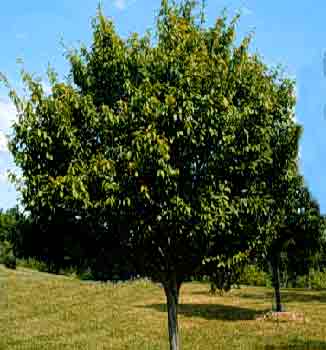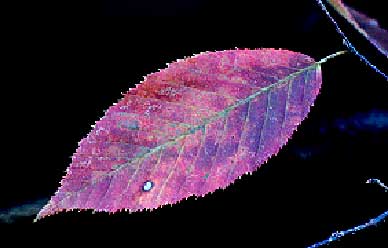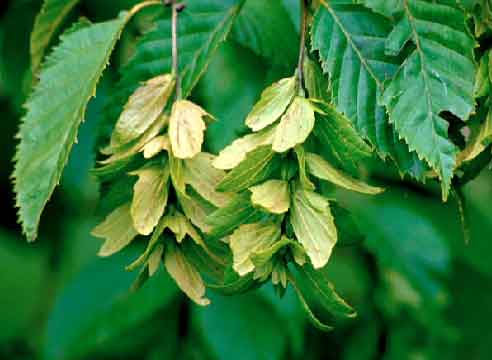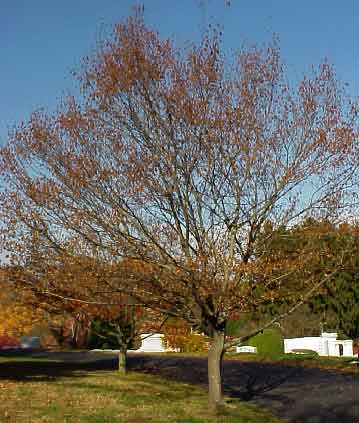 American Hornbeam - Carpinus caroliniana
American Hornbeam - Carpinus caroliniana
Birch Family (Betulaceae)
- Native habitat: Nova Scotia to Florida and west to Texas and Minnesota.
- Growth habit: Can be grown as a multistemmed shrub or a single-stemmed tree. More narrow and upright than European hornbeam.
- Tree size: 20 to 40 feet tall, 20 to 30 feet wide. Growth rate is slow, about 1 foot a year.
- Flower and fruit: Flowers are green catkins and bloom from April until June. Monoecious. Male flowers are 1 to 1½ inches long; female flowers are 2 to 3 inches long with three-lobed bracts. Fruit is a 1/3-inch winged nutlet attached to three-lobed bracts.
 Leaf: Simple, alternate, 2 to 5 inches long. Spring foliage changes from crimson to green, then becomes deep green in summer. Fall foliage ranges from yellow to a scarlet tinge.
Leaf: Simple, alternate, 2 to 5 inches long. Spring foliage changes from crimson to green, then becomes deep green in summer. Fall foliage ranges from yellow to a scarlet tinge.- Hardiness: Winter hardy to USDA Zone 3.
 American hornbeam is a wonderful addition to small yards, and is also perfect for a natural landscape or as a specimen tree. The hard wood of American hornbeam is used to make golf clubs, tool handles and mallets.
American hornbeam is a wonderful addition to small yards, and is also perfect for a natural landscape or as a specimen tree. The hard wood of American hornbeam is used to make golf clubs, tool handles and mallets.
American hornbeam is more difficult to transplant than European hornbeam. It should be transplanted balled-and- burlapped in the spring. The smooth, gray, muscular-looking bark of American hornbeam is attractive year-round. The tree's look is enhanced by its crooked trunk and pendulous, zig-zagging branches, which help attract wildlife. Finches, ruffed grouse and wild turkeys eat American hornbeam nutlets. The shape of the bud is an identifying difference between the American hornbeam and the closely related European hornbeam (Carpinus betulus). European hornbeam has a curved bud. American hornbeam has a straight bud.
The largest known American hornbeam in the U.S. is 69 feet tall and 2½ feet in diameter. It is located in Ulster County, New York.


